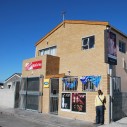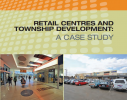Transformações da área-alvo da Operação Urbana Vila Leopoldina-Jaguaré pelo mercado imobiliário: a verticalização residencial como motor de desenvolvimento urbano
Na cidade contemporânea, o ambiente construído vem se modificando, observandose a presença de áreas em transformação de uso e esvaziamento. Em São Paulo, a transformação do ambiente construído mediante esse processo, frente à dinâmica de ocupação do solo e reconfiguração de áreas pela via do mercado imobiliário, parece se consagrar como a principal força de produção do espaço urbano, apesar da existência de instrumentos urbanísticos de indução do desenvolvimento da cidade, articulado pela regulação do poder público municipal.







